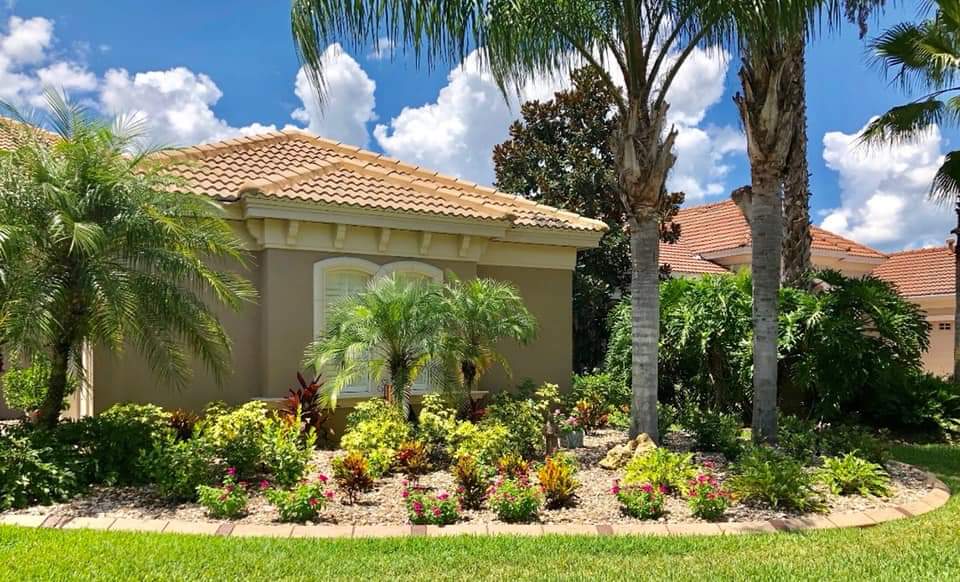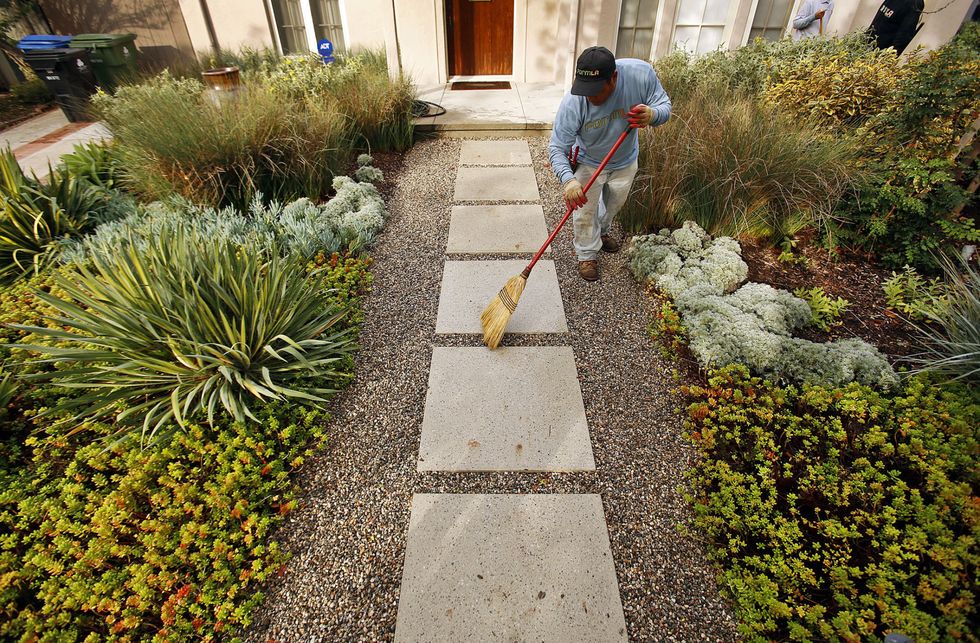Discover the Benefits of Sustainable Palm Desert Landscaping Techniques
Discover the Benefits of Sustainable Palm Desert Landscaping Techniques
Blog Article
A Comprehensive Overview to Creating and Implementing Effective Landscaping Solutions
The art and scientific research of landscape design expand past simple aesthetics; they entail a thoughtful assimilation of layout principles, ecological stewardship, and sensible execution. What approaches can one utilize to guarantee these landscapes not only prosper yet also prosper in harmony with their surroundings?

Comprehending Landscape Style Concepts
One may wonder what fundamental aspects add to efficient landscape layout. At its core, successful landscape design depends upon a number of vital concepts that guide the plan and selection of elements within a space. These principles include unity, percentage, equilibrium, and rhythm, each serving to create an unified outside environment.
Unity describes the natural relationship among various elements, ensuring that they function together aesthetically and functionally. Equilibrium can be attained with balanced or asymmetrical arrangements, enabling the landscape to feel steady and welcoming. Percentage entails recognizing the scale of components in connection with each other and the surrounding atmosphere, advertising aesthetic harmony and convenience.

Examining Your Outdoor Room
Before executing the concepts of landscape design, a detailed evaluation of your exterior area is important. This preliminary evaluation aids define the range of your landscaping task and ensures that your design lines up with the distinct qualities of your residential property. Begin by analyzing the measurements of your space, taking specific measurements to comprehend the offered location for different components such as patio areas, yards, and pathways.
Next, observe the existing attributes of your landscape, including topography, dirt top quality, and drain patterns. These variables substantially affect plant selection and placement. Additionally, assess the sunlight exposure throughout different areas throughout the day, as this will influence the sorts of plants that flourish in your garden.
Think about the microclimates produced by structures, trees, and other barriers, as they can affect temperature level and dampness degrees. Lastly, keep in mind of any kind of existing plants or hardscape elements that you desire to remove or preserve. This comprehensive assessment lays the groundwork for a effective and educated landscaping remedy, making certain that your style is not just aesthetically pleasing but also functional and sustainable for years ahead.
Sustainable Landscaping Methods
These techniques not just advertise ecological balance but also boost the functional and aesthetic value of a landscape. Carrying out efficient watering systems, such as drip watering, minimizes water waste and guarantees that plants get ample moisture (Palm Desert Landscaping).

Another efficient strategy is the tactical positioning of shrubs and trees to offer natural windbreaks and color, therefore lowering power costs (Palm Desert Landscaping). Rainfall gardens can be integrated into the landscape design to handle stormwater drainage effectively, filtering system toxins before they go into waterways
Picking the Right Plants
Choosing the right plants read review for your landscape is vital to achieving both visual charm and eco-friendly consistency. The procedure begins with an understanding of your regional climate, dirt problems, More Bonuses and the specific microenvironments within your landscape. Evaluating elements such as sunshine direct exposure, moisture levels, and existing flora will certainly assist you select plants that flourish in your distinct setting.
Consider integrating native plants, as they are well-adapted to local conditions, call for less maintenance, and support regional wild animals. In addition, choosing a varied variety of species can boost biodiversity while lowering the risk of condition and pest break outs. It is vital to assess the growth habits, blooming durations, and seasonal shades of possible plants to produce a dynamic and natural landscape.
Moreover, consider the meant use of the space; for circumstances, if the location will certainly experience high foot traffic, select resistant ground covers. By thoughtfully choosing plants that straighten with both your visual objectives and environmental demands, you can develop a sustainable landscape that not only boosts your home yet additionally adds favorably to the bordering environment.

Application and Upkeep Techniques
Once the appropriate plants have actually been selected for your landscape, the focus shifts to effective implementation and ongoing upkeep methods. Effective installation begins read this post here with correct website prep work, which consists of dirt testing to determine nutrient levels and pH, adhered to by changing the soil as needed. Meticulously prepare plants according to their growth habits and light needs, making certain appropriate spacing to promote healthy growth.
Irrigation is a crucial aspect of application. Develop a watering timetable that takes into consideration the specific requirements of each plant varieties, adjusting for seasonal changes. Using drip irrigation systems can improve water efficiency and minimize overflow.
Maintenance strategies should be implemented to ensure the durability and vigor of your landscape. Normal tasks include weeding, mulching, and pruning to regulate development and protect against illness. Fertilizing needs to be performed based upon soil tests, supplying the essential nutrients without over-fertilizing.
Keeping track of for parasites and diseases is crucial; early detection can protect against considerable damages. Lastly, seasonal changes to upkeep routines, such as winterizing perennials and preparing for springtime growth, will make sure that your landscape continues to be healthy and balanced and visually appealing year-round.
Verdict
In verdict, efficient landscape design remedies need a complete understanding of style concepts, careful evaluation of outdoor areas, and the application of lasting techniques. The selection of suitable plant varieties plays a crucial duty in improving aesthetic charm and environmental strength - Palm Desert Landscaping. Successful implementation and ongoing upkeep even more make sure the long life and vigor of landscapes. By integrating these components, landscapes can be changed into attractive, functional environments that advertise biodiversity and add positively to area wellness.
One might wonder what fundamental components contribute to effective landscape style. At its core, successful landscape style pivots on several essential concepts that direct the setup and selection of elements within a room.Selecting the right plants for your landscape is critical to accomplishing both aesthetic allure and eco-friendly consistency. It is essential to examine the development practices, blooming periods, and seasonal shades of prospective plants to create a natural and dynamic landscape.
When the ideal plants have been selected for your landscape, the focus changes to effective execution and ongoing maintenance strategies.
Report this page